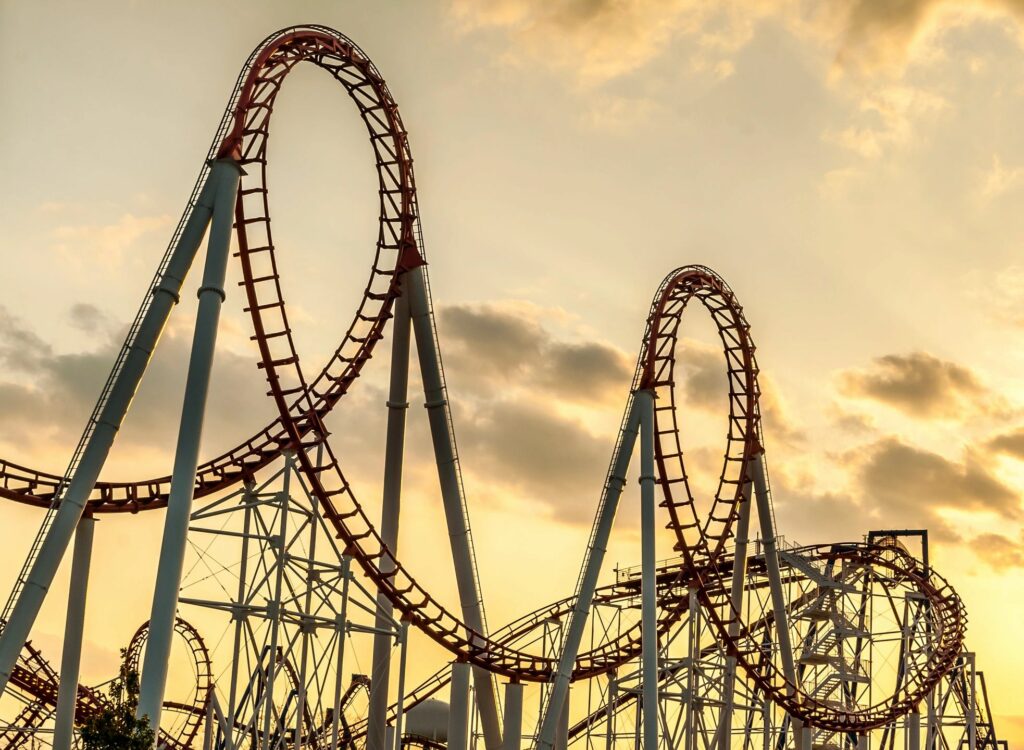“Good investors gather information, put that information into current and historical context, then make sound decisions.”

Rollercoasters mean different things to different people, especially people of different ages. When you are young, rollercoasters represent thrills and challenges, but most of all, fun! The higher, louder, faster the better! Hands up in the first car! Hold on tight in the last car! The longer the line, the better the ride! But over time, we change our tempo, our need for certain types of thrills, and our interest in standing in long lines can start to wain. Rollercoasters may still be okay, but not ones that invert or require a signed waiver before crawling under the lockdown bars. And that’s alright, too.
There are a multitude of other rollercoasters that may confront us as we grow older. Relationships, kids, new jobs, and health issues all can represent varying thrills and challenges, and not always the fun kind. Our energy levels and our levels of engagement can change dramatically at different times of our lives. Personally, one of my lifelong dreams was to become a pilot. I started realizing that dream, at the age of 46, with my first flight lessons. Twenty years later, I found that my interest in piloting my Bonanza for several hours to a long-distance destination, while navigating ever-changing weather conditions, and repeating the process to get home, had dissipated. Today, I am very happy flying on Southwest Airlines.
There are dozens of other relevant analogies, from things we used to do, to things that we do every day but in a different way. Old timers can easily recite a number of things they used to do, but wouldn’t think of trying today. They may include everything from bad habits to playing contact sports. Things we do every day but in a different way may include the way we drive, what and when we eat, even how we listen to our favorite music.
The point is that change is as natural as life itself. The sooner we learn that lesson, the more flexible and resilient we become. And accordingly, the happier we learn to be. Unfortunately, the failure to adapt to change can have a very opposite effect.
This also carries over to how we manage our finances. In the beginning, almost all of us are basically hand-to-mouth. We learn to earn, then to save, then to invest. Some people learn this at an early age, and some struggle their whole lives. The amount of money that we earn, our ability to save while financing houses and cars and kids, and our confidence on how to invest are all subject to dramatic change in the course of our lives. How we learn can be thrilling, or exasperating. The old fashioned method, Trial And Error, can be very expensive. The modern way, Google It, can be very misleading.
Some people believe that all investing is like stepping onto a rollercoaster, but without the fun. They think that you are surrendering all control and are at the mercy of people who do not have your best interests at heart. The more you Google It, the more confusing and helpless you may feel. The reality is that investing doesn’t have to be a stock market carnival ride. Nor does it have to be an OK Corral Shootout. There are sensible ways to approach and learn to understand how things work.
While investing can be a Do-It-Yourself activity, most investors prefer to have a personal relationship with someone who is knowledgeable and experienced. They want to feel comfortable. They want to feel informed. And while riding rollercoasters used to be fun, when it comes to their money, they would much prefer riding the Up escalator. And that’s just alright, too.
Edward D. Foy, Manager, SELECTOR® Money Management.
© 2018 Edward D. Foy. [email protected], www.foyfinancial.com
Sources: Bloomberg.com, Marketwatch.com, StockCharts.com.